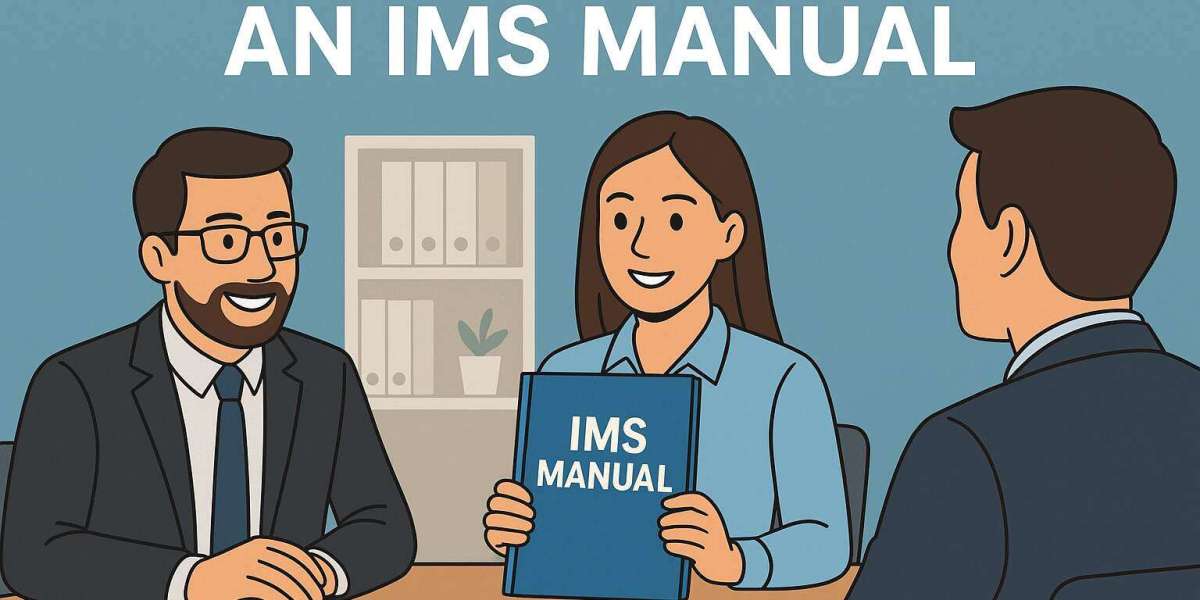In today’s competitive business environment, organizations are under constant pressure to improve quality, reduce environmental impact, and ensure workplace safety — all while complying with international standards and regulations. Many companies address these requirements by integrating their management systems for Quality (ISO 9001), Environment (ISO 14001), and Occupational Health & Safety (ISO 45001). The cornerstone of such an approach is the Integrated Management System (IMS) Manual.
An IMS Manual acts as the master document that defines how an organization’s Integrated Management System operates. It outlines policies, processes, responsibilities, and procedures in a single, coherent framework. Far from being just a compliance document, a well-prepared IMS Manual can provide significant operational, financial, and strategic benefits to organizations.
- Streamlined Documentation and Processes
One of the biggest advantages of an IMS Manual is consolidation. Instead of maintaining separate manuals for quality, environmental, and occupational health & safety management systems, organizations can merge them into a single document. This approach:
- Eliminates duplicate content.
- Reduces document maintenance time.
- Ensures consistent policies across all departments.
For example, instead of three separate procedures for document control, the IMS Manual outlines one integrated process applicable to all standards, making compliance simpler and more efficient.
- Improved Compliance with Multiple Standards
An IMS Manual ensures that the organization’s policies and procedures align with the requirements of ISO 9001, ISO 14001, and ISO 45001 simultaneously. This integrated approach:
- Simplifies internal and external audits.
- Reduces the risk of missing compliance requirements.
- Helps organizations maintain multiple certifications without excessive administrative work.
By having a single source of truth, employees understand exactly what is expected, which improves audit readiness and reduces non-conformities.
- Enhanced Efficiency and Resource Utilization
Without integration, organizations often waste time and resources by performing the same tasks multiple times for different management systems. An IMS Manual eliminates this duplication, allowing teams to:
- Share resources between departments.
- Use a unified approach for training, record-keeping, and reporting.
- Focus on performance improvement rather than redundant administration.
For instance, a single management review meeting can address quality, environmental, and safety performance, saving valuable leadership time.
- Better Communication and Employee Engagement
An IMS Manual provides clarity for everyone in the organization. Employees can see:
- The company’s integrated policy.
- Their roles and responsibilities.
- The processes they must follow to achieve objectives.
This transparency improves communication, reduces misunderstandings, and increases employee engagement. When staff understand how their work impacts quality, environmental performance, and safety, they are more motivated to follow best practices.
- Stronger Risk Management and Preventive Action
The IMS Manual incorporates risk-based thinking, a core requirement in modern ISO standards. By integrating quality, environmental, and safety risks in one framework, organizations can:
- Identify hazards and opportunities early.
- Implement preventive measures before problems occur.
- Respond quickly and effectively to incidents or non-compliance issues.
For example, a new production process can be assessed for its impact on product quality, worker safety, and environmental footprint in a single evaluation, ensuring well-balanced decision-making.
- Cost Savings Through Integration
Implementing and maintaining separate management systems is expensive. The IMS Manual helps reduce costs by:
- Lowering training expenses (one integrated training program instead of three).
- Reducing audit costs (combined audits instead of separate ones).
- Minimizing waste and rework through consistent, streamlined processes.
Over time, these savings contribute to improved profitability and competitiveness.
- Easier Management Review and Continuous Improvement
The IMS Manual becomes a foundation for continuous improvement. Since it includes policies, objectives, and performance monitoring requirements, organizations can easily:
- Conduct integrated management reviews.
- Track key performance indicators across all areas.
- Identify opportunities for improvement in a structured way.
By using the IMS Manual as a reference, leadership can make informed strategic decisions that benefit the business as a whole.
- Positive Impact on Reputation and Stakeholder Confidence
An organization that can demonstrate it has a single, well-structured IMS Manual shows a commitment to quality, safety, and sustainability. This improves:
- Customer confidence in the organization’s ability to deliver consistent, compliant products and services.
- Employee trust in workplace safety and management practices.
- Stakeholder assurance that environmental and legal responsibilities are met.
This enhanced reputation can lead to better client relationships, more business opportunities, and stronger market positioning.
- Simplified Onboarding and Training
New employees often struggle with understanding separate quality, environmental, and safety procedures. With an IMS Manual, onboarding becomes easier:
- Staff get one clear document to refer to.
- Training is more cohesive and less overwhelming.
- Learning is faster, enabling employees to be productive sooner.
This not only saves time but also ensures consistent understanding across the organization.
Conclusion
An IMS Manual is much more than a compliance requirement — it’s a strategic tool that can transform the way organizations operate. By integrating quality, environmental, and occupational health & safety management into a single document, businesses can reduce duplication, improve efficiency, enhance communication, and strengthen risk management.
The benefits extend beyond certification: they lead to cost savings, better decision-making, and increased trust from customers, employees, and stakeholders. In an era where operational excellence and sustainable practices are key to success, implementing an IMS Manual is not just a smart choice — it’s an essential one for forward-thinking organizations.



